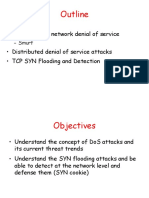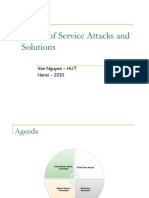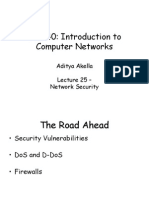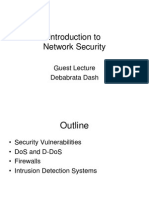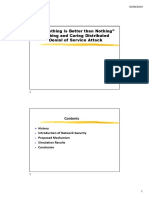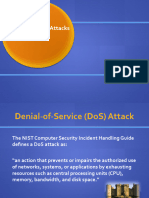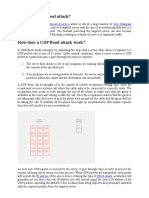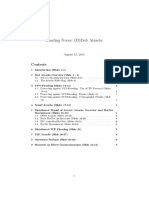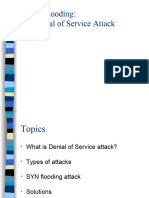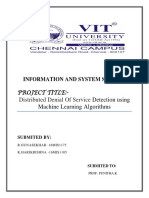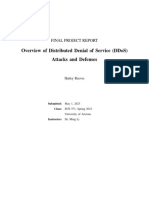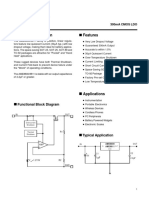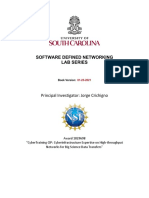0% found this document useful (0 votes)
20 views34 pages07 Lecture07
The document discusses various cybersecurity threats, particularly focusing on denial of service (DoS) and distributed denial of service (DDoS) attacks, including their definitions, types, and recent trends. It highlights the increasing frequency and severity of these attacks, with specific statistics from 2023 and early 2024, and explains methods of attack such as TCP SYN flooding and Smurf attacks. Additionally, it outlines detection methods and the challenges faced in identifying and mitigating these threats.
Uploaded by
Maria Levee LimCopyright
© © All Rights Reserved
We take content rights seriously. If you suspect this is your content, claim it here.
Available Formats
Download as PDF, TXT or read online on Scribd
0% found this document useful (0 votes)
20 views34 pages07 Lecture07
The document discusses various cybersecurity threats, particularly focusing on denial of service (DoS) and distributed denial of service (DDoS) attacks, including their definitions, types, and recent trends. It highlights the increasing frequency and severity of these attacks, with specific statistics from 2023 and early 2024, and explains methods of attack such as TCP SYN flooding and Smurf attacks. Additionally, it outlines detection methods and the challenges faced in identifying and mitigating these threats.
Uploaded by
Maria Levee LimCopyright
© © All Rights Reserved
We take content rights seriously. If you suspect this is your content, claim it here.
Available Formats
Download as PDF, TXT or read online on Scribd
/ 34

